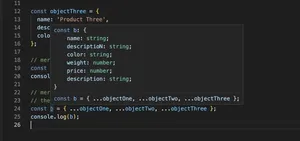Introduction
TypeScript, as a superset of JavaScript, enhances the language by adding static types and more robust tooling. Understanding equality operators in TypeScript is crucial for performing comparison operations that are both type-safe and reliable. This guide dives deep into equality checks in TypeScript, from primitive comparisons to complex data structures.
Understanding Equality
In TypeScript, two primary operators are used for equality checks: == and ===. The double equals operator (==) performs type coercion, trying to convert both operands to a common type before comparing them. On the other hand, the triple equals operator (===) is stricter and checks for both value and type equality, which is why it’s preferred in TypeScript.
let num: number = 5;
let str: string = '5';
console.log(num == str); // true, because of type coercion
console.log(num === str); // false, because types are different
Type-Specific Comparisons
In cases where you have variables of specific types, TypeScript’s type system enhances the predictability of equality checks. When using ===, comparisons not only check values but also ensure that the type matches, which helps catch errors at compile time.
let first: number = 5;
let second: number = '5';
// Error: Type '"5"' is not assignable to type 'number'.
console.log(first === second);
Complex Types Equality
When comparing objects in TypeScript, things get more intricate. Since objects are reference types, two objects with the same properties and values are not considered equal when compared directly with ===.
interface User {
id: number;
name: string;
}
let user1: User = { id: 1, name: 'John' };
let user2: User = { id: 1, name: 'John' };
console.log(user1 === user2); // false, because they are different references
Custom Equality Checks for Objects
To accurately check for equality between objects, we need to implement a custom function that compares individual properties.
function areUsersEqual(userA: User, userB: User): boolean {
return userA.id === userB.id && userA.name === userB.name;
}
console.log(areUsersEqual(user1, user2)); // true
Generics and Equality
Using generics in TypeScript allows for creating reusable components. When it comes to equality, generics add a layer of complexity as they introduce type variables that can represent any type.
function isEqual<T>(a: T, b: T): boolean {
if (typeof a === 'object' && typeof b === 'object') {
return JSON.stringify(a) === JSON.stringify(b);
}
return a === b;
}
console.log(isEqual({ id: 1 }, { id: 1 })); // true
console.log(isEqual('hello', 'hello')); // true
Conclusion
Mastering equality operators in TypeScript adds precision and reliability to your code. Throughout this guide, we examined various facets of equality checks, from simple primitives to more complex generic types. Consistently using === will maintain type integrity and using custom equality functions will help ensure accurate comparisons of complex structures. Remember, thoughtful comparisons will lead to clearer, more maintainable, and error-resistant code.
